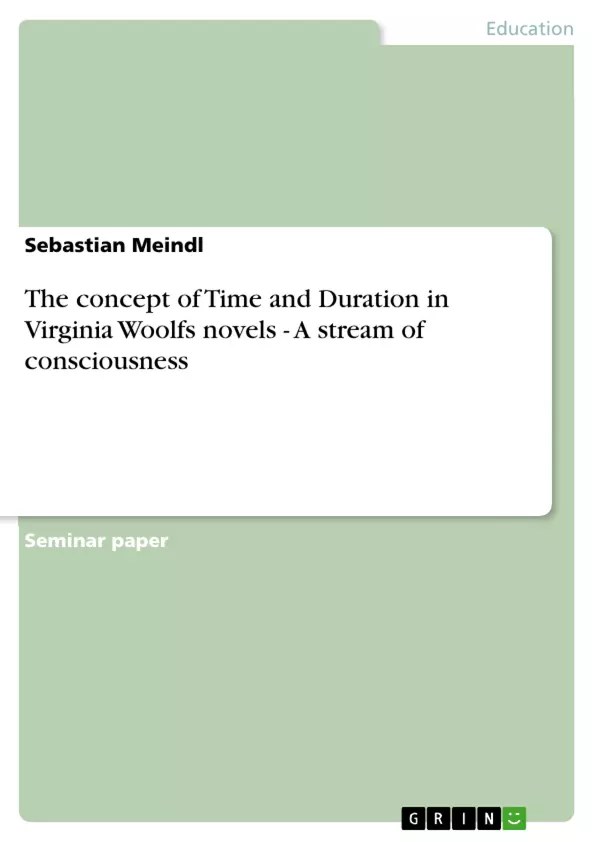“I believe that all novels, that is to say, deal with character, and that it is to express character- not to preach doctrines, sing songs, or celebrate the glories of
the British Empire, that the form of the novels, so clumsy, verbose, and undramatic, so rich and unelastic, and alive, has been evolved. To express character, I have said.“
Virginia Woolf made this “character expressing” to the centre of her work and brought it to perfection in her late novels. She began using a stream technique in Jacob’s Room to describe characters’ thoughts and feelings. In phase II she built her novels on characters’ thoughts, formed the plot through description and characters mind progression. In To The Lighthouse Woolf let the plot progress through the developments of character. The Waves completely relies on the description of the characters’ minds and is phase III of her development. “She reaches perfection in characters’ thought and mind description” through the “stream of consciousness.”
The purpose of this work is to cover a basic approach on the stream technique Woolf uses in her novels, as well as embed some text passages in the psychological background William James and Henri Bergson gave in their theories. Bergson and James are both psychologists who gave way to theories oftime and duration, as well as to the theory of consciousness. Bergson, who was senior of William James, was highly influenced by James’ work and it is said that Bergson’s writing of Les données immédiates de la conscience was influenced by James’ article “On Some Omissions of Introspective Psychology”. Concurrently Bergson was highly regarded by James:
“So modest and unpretending a man but such a genius intellectually! I have the strongest suspicions that the tendency which he has brought to a focus, will end by prevailing,(...)“
Consequently it is obligatory to combine Woolf’s ideas of character description and her stream technique, with which she provides an insight into the character, with James’ and Bergson’s work. This can of course not be done in extenso on the following pages but I am trying to give an overview what we can deplore behind the surface of Woolf’s work.
Inhaltsverzeichnis (Table of Contents)
- Preface
- Stream of Consciousness- A Theoretical Approach
- Time and Duration - A Theoretical Approach
- Text based Analysis of Time and Duration
- Text based Analysis of Stream of Consciousness
- Epilogue
- Bibliography
Zielsetzung und Themenschwerpunkte (Objectives and Key Themes)
This work aims to provide a basic understanding of the stream of consciousness technique employed in Virginia Woolf's novels, examining its relation to the psychological theories of William James and Henri Bergson. The analysis will highlight the connection between Woolf's approach to character description and the concepts of time and duration developed by James and Bergson.
- Stream of Consciousness technique in Virginia Woolf's novels
- Psychological theories of William James and Henri Bergson
- The relationship between consciousness, time, and duration
- Character description and the progression of the characters' minds
- The influence of James and Bergson on Woolf's literary style
Zusammenfassung der Kapitel (Chapter Summaries)
The first chapter explores the concept of consciousness itself, drawing on William James' definition of a continuous, uninterrupted flow of thoughts, sensations, and feelings. Chapter two examines the theoretical framework of time and duration, focusing on the theories of Henri Bergson and William James. The following chapters then delve into the specific application of the stream of consciousness technique in Woolf's works, exploring its use in character development and the portrayal of internal experiences.
Schlüsselwörter (Keywords)
Key terms and concepts explored in this work include stream of consciousness, consciousness, time, duration, character, character development, William James, Henri Bergson, Virginia Woolf, novels, literary analysis, and psychological theory.
- Quote paper
- Sebastian Meindl (Author), 2008, The concept of Time and Duration in Virginia Woolfs novels - A stream of consciousness, Munich, GRIN Verlag, https://www.grin.com/document/147920



